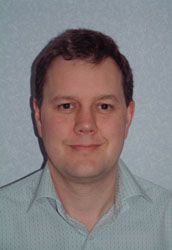Q&A: The Developing Nature of Analytical Laboratories
Dafydd Milton and Bob Wiedemer of Thermo Fisher Scientific spoke to us about how analytical laboratories have had to adapt to meet the changing needs of our times.


Analytical laboratories are found in all areas of science. The need to provide timely, accurate and reliable separations is, therefore, a core requirement of the commercial analysis industry. The most notable applications of separation science are within the pharmaceutical, environmental and food safety industries.Dafydd Milton and Bob Wiedemer of Thermo Fisher Scientific spoke to us about how analytical laboratories have had to adapt to meet the changing needs of our times.
Q: Why is there a growing need to develop new analytical methods within environmental and food safety industries?
Environmental contamination is a consequence of modern industrial activity. As industry grows and develops new manufacturing processes and technologies, the risks of contamination are ever changing, fuelling the need for new analysis methods. Regulatory authorities are, therefore, constantly updating the list of potential contaminant compounds, the prescribed methods for analysing samples and the acceptable concentrations of the contaminant.
Public health and safety relies on stringent observation of the acceptable levels of contaminants. Analytical laboratories that provide separation services for the food manufacturing industry face incredibly and increasingly stringent limits of contamination of potentially harmful compounds. As evidence of the biological effects of food additives and contaminants, such as preservatives and pesticides, accumulates, food standards agencies around the world constantly revise and alter their regulatory guidelines. As such, analysis of samples of this type requires particularly careful attention to detail, both in sample preparation and the chromatographic method. As these guidelines become ever more stringent, laboratories are increasingly turning to more sensitive analytical techniques such as LC–MS and GC–MS.
Method development in analytical laboratories can be time consuming and expensive in terms of the materials used and the man hours needed to develop and validate a new method in line with regulatory guidelines. As a consequence of this increased competition for time, instruments and technical experts are unavailable to run samples. These changes are starting to influence the formation of analytical and chromatography research and development labs, with specialists providing new methods and techniques to the higher throughput labs.
Q: What are your observations on how the analytical laboratory is changing to meet these demands?
Maintaining the required level of sensitivity and throughput needed in a commercial laboratory is difficult; efficiency drives and economic instability necessitate further developments in this area. Developing methods and validating the results is an extremely time consuming process, costing considerably in terms of additional consumables and instrument/personnel time. Training technical experts to have the necessary levels of experience in the operation of complex instrumentation is also expensive and, as a result, non-technical experts, whose laboratory experience lies in other areas, are increasingly used to run samples in line with regulatory standards.
As the workhorse of an analytical laboratory, chromatography needs to maintain pace with the increasing workloads and regulatory requirements. As such both GC and LC techniques are constantly being upgraded or developed, although as a more established technique the GC methods for analysis of food and environmental samples are heavily prescribed in regulatory documents, such as the EPA methods. HPLC is a faster evolving technique and, with the wide range of stationary phase materials available, it is a focus for technological innovation. Providing a venue for this, laboratories specializing in method development can provide techniques for application in a more general analytical lab setting. This increasing availability and access to new, faster and more advanced techniques can significantly increase the throughput efficiency of an analytical lab. A push is needed, to develop laboratory solutions that ease the pressures of throughput and reduce the time consuming method development and validation.
Q: What are the future developments that you feel will help to support chromatography as a tool in an analytical laboratory?
In line with the need to increase access to chromatographic techniques for analysts with varying levels of experience, we should be looking for products or workflow solutions that can allow fast, sensitive and easy sample preparation and analysis. Techniques in LC–MS and GC–MS involve the use of complex, high specification technology and sensitive instruments; providing such solutions will give the technical experts the freedom to undertake method development, perform more complex separations and technical support.
It should never be forgotten that sample preparation is the key to a successful separation. If the sample preparation does not preserve the desired analytes then the chromatographic stage of the analysis will not successfully quantify the target sample components. Providing the chromatographer with the resources to perform the optimized sample preparation steps, in addition to the consumables and technical information needed for the separation itself, can significantly increase productivity and efficiency, while reducing costs.
Q: What method and technological developments do you think will come from the specialist research and development laboratories?
The changing nature and landscape of the analytical industry is driving a division of labour into analytical workhorse laboratories, specializing in high throughput separations; and specific research and development laboratories in which field experts focus on method development and validation and provide essential technical support for the analytical lab.
The recent development of chromatography applications kits provide what are essentially “plug-and-play” solutions to enable non-technical experts to perform the highest quality separations, without having to run through extensive method development. Examples of these include the Thermo Scientific persistent organic pollutants (POPs) analyses kits and the Thermo Scientific Beta agonist kit. These kits provide all of the resources, chromatography consumables, method documents and instrument programmes necessary to perform a quantitative analysis that fully complies with the sensitivity levels required by regulatory standards.
Kits such as these have been developed by experts to allow greater access to the technology. Resourcing a method in this way provides an economy of scale, with kits generally able to provide for 100 analyses at a time. Total workflow solutions of this kind are rare and epitomize the change seen in analytical laboratories over the last few years. Allowing convenient and easy use of chromatography techniques as tools for commercial analysis, allows the technical experts to focus on the research and development of new techniques for upcoming separation challenges.
Dafydd Milton gained a PhD in Mass Spectrometry from the University of Wales, Swansea, UK before joining VG Elemental in the early 1990s where he worked as an application scientist with inorganic MS. Following this, he spent 10 years working in a customer laboratory in Australia covering a wide range of techniques. He rejoined VG Elemental, now part of Thermo Fisher Scientific, in 2004 with responsibility for customer support and training for GD–MS and ICP–MS. In May 2006 Dafydd moved to the Chromatography Consumables and Specialty Products group to his current position as product manager for LC and LC–MS columns.
Bob Wiedemer joined Thermo Fisher Scientific in Bellefonte, Pennsylvania, USA in February 2008 as a technical service chemist. He has worked in the chromatography industry since graduating from The Pennsylvania State University in 1980. His focus has been on gas chromatography columns and accessories, including work on GC applications, column manufacturing and QC, marketing and technical service.
If you are interested in participating in a future Q&A please contact Janet Kelsey for more information.
The Complexity of Oligonucleotide Separations
January 9th 2025Peter Pellegrinelli, Applications Specialist at Advanced Materials Technology (AMT) explains the complexity of oligonucleotide separations due to the unique chemical properties of these molecules. Issues such as varying length, sequence complexity, and hydrophilic-hydrophobic characteristics make efficient separations difficult. Separation scientists are addressing these challenges by modifying mobile phase compositions, using varying ion-pairing reagents, and exploring alternative separation modes like HILIC and ion-exchange chromatography. Due to these complexities, AMT has introduced the HALO® OLIGO column, which offers high-resolution, fast separations through its innovative Fused-Core® technology and high pH stability. Alongside explaining the new column, Peter looks to the future of these separations and what is next to come.
Metabolomics Analysis of Low Birth-Weight Infants Using UHPLC-MS/MS Following Lipid Emulsion
January 10th 2025A recent study aimed to directly compare the changes in serum metabolites among very low birth-rate (VLBW) infants following the administration of the soybean oil-based lipid emulsion and soybean oil, medium-chain triglycerides, olive oil, and fish oil (SMOF) lipid emulsion using untargeted metabolomics techniques.
Analyzing New Drug Modalities: An ISC 2024 Interview with Kelly Zhang
January 10th 2025At ISC 2024 in Liverpool, United Kingdom, LCGC International interviewed Kelly Zhang of Genentech about her work analyzing new drug modalities, such as mRNA, oligonucleotides, peptides, and cell and gene therapies.